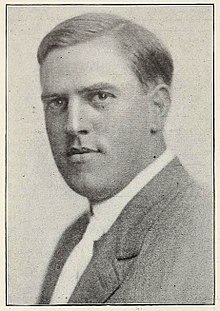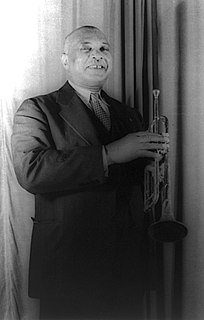
William Christopher Handy was a composer and musician who referred to himself as the Father of the Blues. Handy was one of the most influential songwriters in the United States. One of many musicians who played the distinctively American blues music, Handy did not create the blues genre but was the first to publish music in the blues form, thereby taking the blues from a regional music style with a limited audience to a new level of popularity.

Joseph Russel Robinson was an American ragtime, dixieland, and blues pianist and composer who was a member of the Original Dixieland Jass Band.

Harry Von Tilzer, 8 July 1872 – 10 January 1946) was an American composer, songwriter, publisher and vaudeville performer.
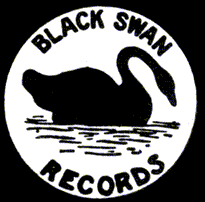
Black Swan Records was an American jazz and blues record label founded in 1921 in Harlem, New York. It was the first widely distributed label to be owned, operated, and marketed to African Americans.. Black Swan was revived in the 1990s for CD reissues of historic jazz and blues recordings.

Joseph Francis Lamb was an American composer of ragtime music. Lamb, of Irish descent, was the only non-African American of the "Big Three" composers of classical ragtime, the other two being Scott Joplin and James Scott. The ragtime of Joseph Lamb ranges from standard popular fare to complex and highly engaging. His use of long phrases was influenced by classical works he had learned from his sister and others while growing up, but his sense of structure was potentially derived from his study of Joplin's piano rags. By the time he added some polish to his later works in the 1950s, Lamb had mastered the classic rag genre in a way that almost no other composer was able to approach at that time, and continued to play it passably as well, as evidenced by at least two separate recordings done in his home, as well as a few recorded interviews.
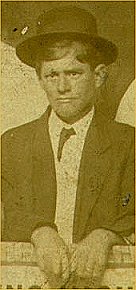
Tom Brown, sometimes known by the nickname Red Brown, was an early New Orleans dixieland jazz trombonist. He also played string bass professionally.
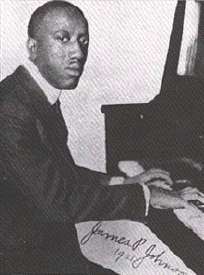
James Price Johnson was an American pianist and composer. A pioneer of stride piano, he was one of the most important pianists in the early era of recording, and like Jelly Roll Morton, one of the key figures in the evolution of ragtime into what was eventually called jazz. Johnson was a major influence on Count Basie, Duke Ellington, Art Tatum, and Fats Waller, who was his student.
Discography is the study and cataloging of published sound recordings, often by specified artists or within identified music genres. The exact information included varies depending on the type and scope of the discography, but a discography entry for a specific recording will often list such details as the names of the artists involved, the time and place of the recording, the title of the piece performed, release dates, chart positions, and sales figures.

"Saint Louis Blues" is a popular American song composed by W. C. Handy in the blues style and published in September 1914. It was one of the first blues songs to succeed as a pop song and remains a fundamental part of jazz musicians' repertoire. Louis Armstrong, Bing Crosby, Bessie Smith, Count Basie, Glenn Miller, Guy Lombardo, and the Boston Pops Orchestra are among the artists who have recorded it. The song has been called "the jazzman's Hamlet." Composer William Grant Still arranged a version of the song in 1916 while working with Handy.

Egbert Anson Van Alstyne was an American songwriter and pianist. Van Alstyne was the composer of a number of popular and ragtime tunes of the early 20th century. He was Jewish.

James Reese Europe, sometimes known as Jim Europe, was an American ragtime and early jazz bandleader, arranger, and composer. He was the leading figure on the African Americans music scene of New York City in the 1910s. Eubie Blake called him the "Martin Luther King of music".

Jelly Roll Morton: The Complete Library of Congress Recordings is a 2005 box set of recordings from jazz pioneer Jelly Roll Morton. The set spans 128 tracks over eight CDs. It won two Grammy Awards in 2006, Best Historical Album and Best Album Notes.

Art Gillham was an American songwriter, who was among the first crooners as a pioneer radio artist and a recording artist for Columbia Records.
"Hesitation Blues" is a popular song adapted from a traditional tune. One version was published by Billy Smythe, Scott Middleton, and Art Gillham. Another was published by W.C. Handy as "Hesitating Blues". Because the tune is traditional, many artists have taken credit as writer, frequently adapting the lyrics of one of the two published versions. Adaptations of the lyrics vary widely, though typically the refrain is recognizably consistent. The song is a jug band standard and is also played as blues and sometimes as Western swing. It is cataloged as Roud Folk Song Index No. 11765. Composer William Grant Still arranged a version of the song in 1916 while working with Handy.

"The Memphis Blues" is a song described by its composer, W. C. Handy, as a "southern rag". It was self-published by Handy in September 1912 and has been recorded by many artists over the years.
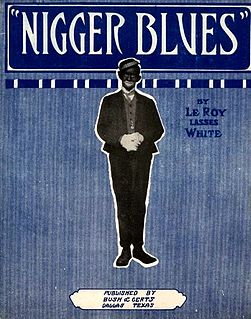
"Nigger Blues", written by Le Roy "Lasses" White, was one of the first blues songs published. Copyrighted by the Texas-born White in 1912, it was first titled "Negro Blues", but for some reason when White published it in 1913, he retitled it.

Charles Adams Prince was an American conductor, bandleader, pianist and organist known for conducting the Columbia Orchestra and, later, Prince's Band and Orchestra. He made his first recordings, as a pianist, in 1891 for the New York Phonograph Company. Later in the 1890s he worked as a musical director for Columbia Records. He also conducted the Columbia Orchestra and Columbia Band starting in 1904 as the successor of the cornetist Tom Clark.

"Harlem Chapel Chimes" is a 1935 jazz instrumental composed by Glenn Miller. The song was released as an A-side 78 single by the Dorsey Brothers Orchestra.
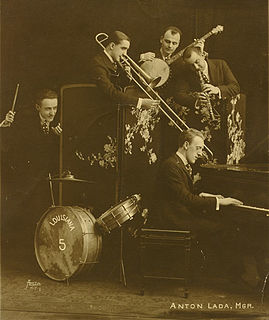
Anton Lada was a ragtime, jazz and dance musician. He was a drummer. He played with and was the manager of the Louisiana Five. He recorded on Columbia Records and toured. He performed for dancing and vaudeville shows and made a series of recordings for Emerson Records, Edison Records, and Columbia Records.
